
What Is Included in the Creator Economy: Artists, Influencers, and Founders
The Creator Economy consists of who people use the internet to build businesses and careers. It includes technology like social media, influencer marketing, and various ways to make money online. Think of it as a place where content creators, influencers, and entrepreneurs are thriving. And at the heart of it all, there are tons of tools, both software and financial, helping these creators succeed. This market keeps growing, and it’s shaping up to be a significant part of the global economy. With Web 3.0 on the horizon, big changes in how we own and make money from content are expected. These factors contribute to what is included in the Creator Economy.
Table of Contents
What Is Included in the Creator Economy?
The Three Key Trends
What are the standout trends included in the Creator Economy that are making waves right now? Here are three big ones:
Shifting from Social Media to Creator-Owned Platforms
One of the coolest things happening is that creators are no longer putting all their eggs in the social media basket. Instead, they’re creating their own websites, apps, and tools for making money. It’s like setting up your own digital shop rather than relying solely on platforms like Facebook or Instagram. This move gives creators more control and a direct line to their fans. They’re not just riding the social media wave; they’re making their own waves.
Creators are Turning into Entrepreneurs
The Creator Economy isn’t just about being a content producer; it’s a full-blown entrepreneurial adventure. Creators are stepping up and becoming founders. They’re putting together teams, developing their own business strategies, and building tools to support their creative careers. It’s a bit like juggling multiple hats, from content creator to community manager to business owner. They’re not just artists; they’re creators and entrepreneurs, and they’re rocking both roles.
Personal Brands are Beating Faceless Corporations
Remember the time when we used to engage with faceless big corporations? Well, those days are changing. The Creator Economy is all about personal brands and authentic connections. People want to connect with real individuals who share their interests, experiences, and passions. It’s all about personal connections rather than faceless brands. Creators are stepping into the spotlight, and it’s reshaping how we consume content.
These trends are where the action is in the Creator Economy today and moving forward. Creators are seizing these opportunities to redefine the way we consume and engage with content. It’s an exciting time to be a part of this shifting economy.
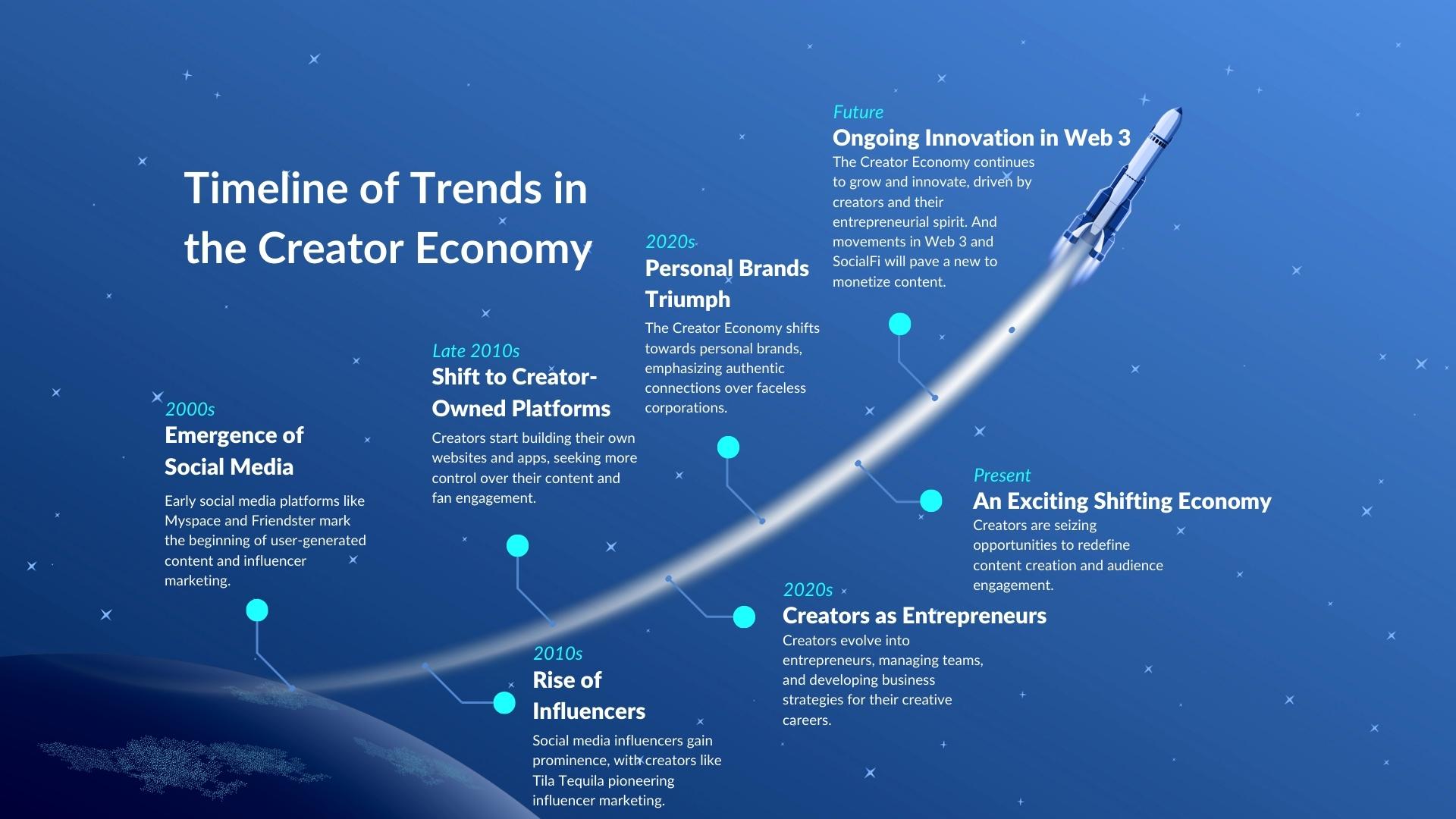
Monetization in the Creator Economy
The Creator Economy isn’t just about creativity and content; it’s also a thriving ecosystem of monetization opportunities. Every year, creators gain access to a plethora of new tools, diversifying their revenue streams. But it’s not all smooth sailing; they also face increasing restrictions on established platforms like Instagram, Facebook, Twitch, TikTok, and more.
However, here’s the exciting part: the Creator Economy is in the midst of a major transformation, with 2024 marking a turning point. New platforms are sprouting up like never before, promising fresh and exciting monetization methods. These platforms are aim to empower creators by providing direct payment options.
Imagine receiving tips or subscriptions and having immediate access to your earnings. That’s where SocialFi (Social Financialization) comes into play. It’s a game-changer. With creator debit cards linked to your Web3 web wallet, you can monetize your earnings instantly, directly from your social platforms. In essence, your social media account becomes your wallet, and the content you create remains entirely yours.
But here’s something new – users on these platforms also get paid for viewing ads. Yes, you read that right! It’s a monumental shift that’s reshaping the very foundations of how social platforms operate and introducing innovative new ways to get creators compensated. Content is still king, but the way we receive payments is undergoing a remarkable transformation, making the Creator Economy a life-changing space, especially for those navigating the challenging job market. It’s a win-win for creators and their audiences.
The Content Creator Business
Within the Creator Economy, content creators now operate as entrepreneurs, shaping their own businesses. They’ve expanded beyond traditional roles to lead their own enterprises. This shift reflects the always changing nature of this space. Creators manage teams, employ diverse tools, and focus on nurturing their creative talents while running their businesses.
[Creator Economy Comprehensive Guide]

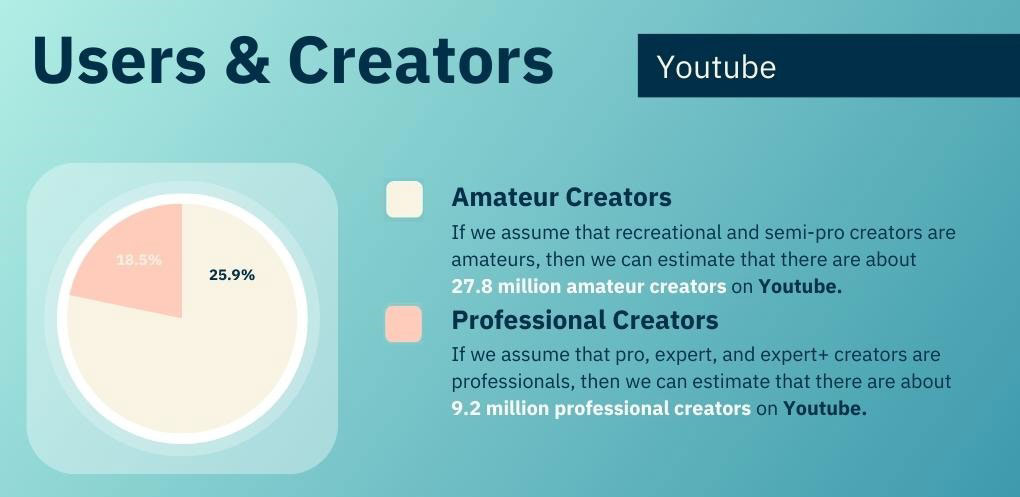
Foundational Media Platforms:
The Creator Economy’s roots trace back to key media platforms that came about in the late 2000s. Platforms such as YouTube, Instagram, iTunes, Spotify, and more recently, Snapchat, Twitter, Medium, Twitch, TikTok, and others played pivotal roles. These platforms offered creators not only a space for discovery but also advanced recommendation and curation algorithms that helped build their audiences. This solved the distribution problem, reducing reliance on large production companies. While these platforms were transformative, they also brought the challenge of “platform whiplash.” Creators had to diversify their presence across different apps to mitigate the risks associated with platform fluctuations or policy changes.
Monetizing Influencer Reach:
The Creator Economy’s next phase saw the rise of monetizing influencer reach. As top creators established dedicated and reliable audiences, brands recognized the potential of partnering with them for promotions. Some platforms shared ad revenues with creators, while others left monetization to creators. This gave birth to sponsored content, with companies like Fashion Nova, facilitating these deals to build their brand from social media.
The influencer marketing sector has flourished, with a market size of $100 billion in 2021 , as reported by Mediakix. Another asinine amount of $15 billion in venture capital has been invested in over 300 Creator Economy startups since 2021. Creators learned that while sponsored content was profitable, it could sometimes erode trust with their audiences, posing challenges to engagement and growth. This realization paved the way for the latest development in the Creator Economy.
Creators as Businesses:
Today, creators have moved beyond being primarily compensated through ad revenue shares and brand sponsorships. They are now funded directly by their fans, creating a more personal and sustainable form of monetization. Creators offer exclusive content, merchandise, books, newsletters, fan engagement, coaching, consulting, and speaking engagements. This diversification of income streams allows creators to focus on their core content and deliver tailored experiences to their most dedicated fans, rather than catering to a broad audience with generic content. Creators are less reliant on traditional ad revenue models, thanks to the support of their fans.
SocialFi and Web3:
The Creator Economy is poised for another major development driven by SocialFi (Social Financialization) and Web3 technologies. These innovations enable new, direct payment methods, granting creators instant access to their earnings. SocialFi facilitates payments through methods like creator debit cards that immediately monetize earnings from social platforms. Like a social bank, a creator’s social media account serves as a wallet, while content remains the creator’s property. Users on these platforms are also compensated for viewing ads. This shift will change how social platforms operate and introduce innovative methods for creator compensation.
Finance Management Tools:
Successful creators understand that it’s not just about creating great content but also about managing their finances effectively. Fortunately, a variety of finance management tools have come about to simplify this aspect of their business. Here are some key components:
Payment Processors:
Payment processors like PayPal, Stripe, and Square play a vital role in helping creators receive payments from various sources. These platforms enable secure and efficient transactions, making it easier for creators to access their earnings.
Creator-Focused Banks:
Some financial institutions now cater specifically to content creators, offering tailored services and accounts. These banks understand the unique income streams of creators and provide tools to manage finances effectively.
Income Tracking Software:
Managing income from multiple revenue streams can be a challenge. Creators rely on income tracking software to monitor earnings from ad revenue, merchandise sales, sponsorships, and more in one centralized location.
Tax Management Tools:
Tax compliance is a significant concern for creators, given the complexities of their income sources. Specialized tax management tools help creators keep track of deductions, calculate taxes owed, and prepare for tax season.
Investment Platforms:
As creators generate substantial incomes, they explore investment opportunities to grow their wealth. Investment platforms enable them to make informed financial decisions and invest in stocks, cryptocurrencies, or other assets.
These finance management tools are instrumental in helping creators maintain financial stability, plan for the future, and navigate the complexities of income generation in the Creator Economy. They contribute to the overall financial well-being of content creators and are integral components of what’s included in the Creator Economy.
[Learn how NFTs will be the future of monetization]
Creators: The New Founders
We find ourselves at a moment in history where the role of a professionalized creator has become one of the most sought-after professions. Creators go on a path driven by their sheer love for the act of creation. As they cultivate their audience and expand their revenue streams, the responsibilities of managing their growing digital empires intensify. The startups poised for success are those that prioritize empowering creators to seamlessly monetize their content, allowing them to stay true to their passion—creating.
Today’s creators have transitioned from being artists to full-fledged founders. Their role now encompasses product management, design, community engagement, e-commerce, and data science, all while maintaining their position as entertainers. They are tasked with assembling a team of experts and vendors to navigate the array of tools required to establish a diversified presence across multiple platforms.
However, this diversification offers a unique resilience. Creators are no longer at the mercy of tech giants or their ever-shifting algorithms; they establish a direct and unmediated connection with their fan base. Each creator can tailor their portfolio of revenue streams to align with their unique style, no matter how niche it may be. This is a win-win situation as creators catering to the most esoteric interests can now build sustainable careers. The age of homogeneous, one-size-fits-all content is over, making room for a diverse array of content tuned to every subculture across the spectrum. Web 3 will bring more profitable engines to make this industry even more enticing.
Final Thoughts:
Creators aren’t just the artists of the internet; they’re the entrepreneurs and pioneers of a new generation. They’re not waiting for opportunities – they’re creating them. Instead of following the traditional paths of a 9-to-5 job, they’re charting their course on the internet. Content is both the product and the driving force behind businesses.
While artists once relied solely on galleries and managers, these creators use the power of social media and the internet. They’re their bosses, their marketing teams, and their production crews. They leverage platforms, not only to showcase their talent but to build brands and lucrative businesses. The Creator Economy empowers them with access to audiences spanning the globe and with it, unprecedented opportunities for monetization.
Content creation is not just a gig; it’s a full-blown career. Whether it’s the YouTuber curating captivating vlogs, the Instagram influencer influences the fashion industry, or the Twitch streamer turning gaming into a spectator sport, creators are rewriting the rules. They’re the new founders of their destiny.
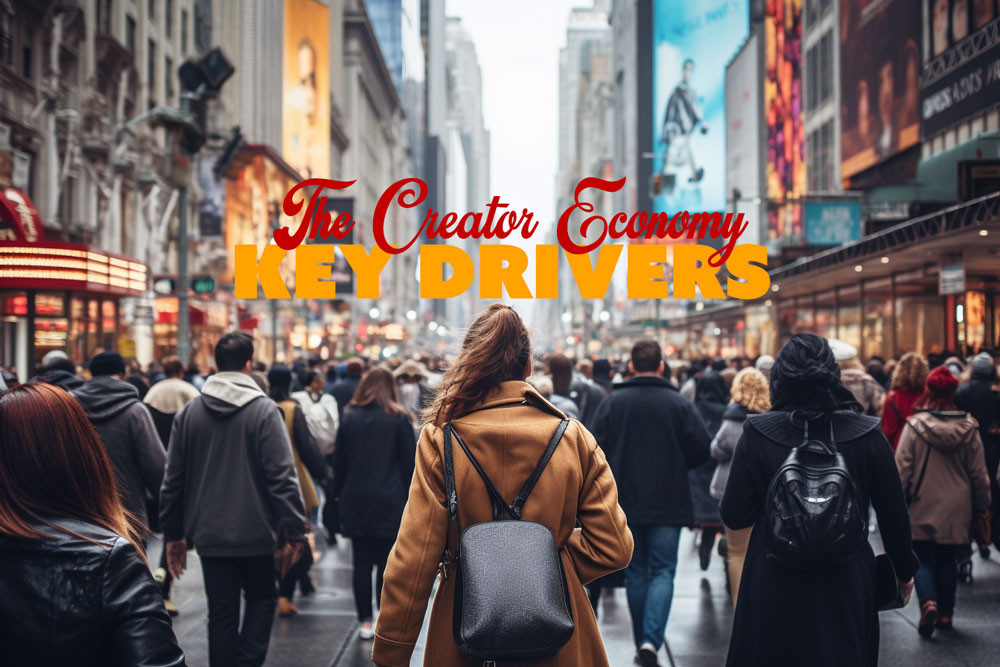


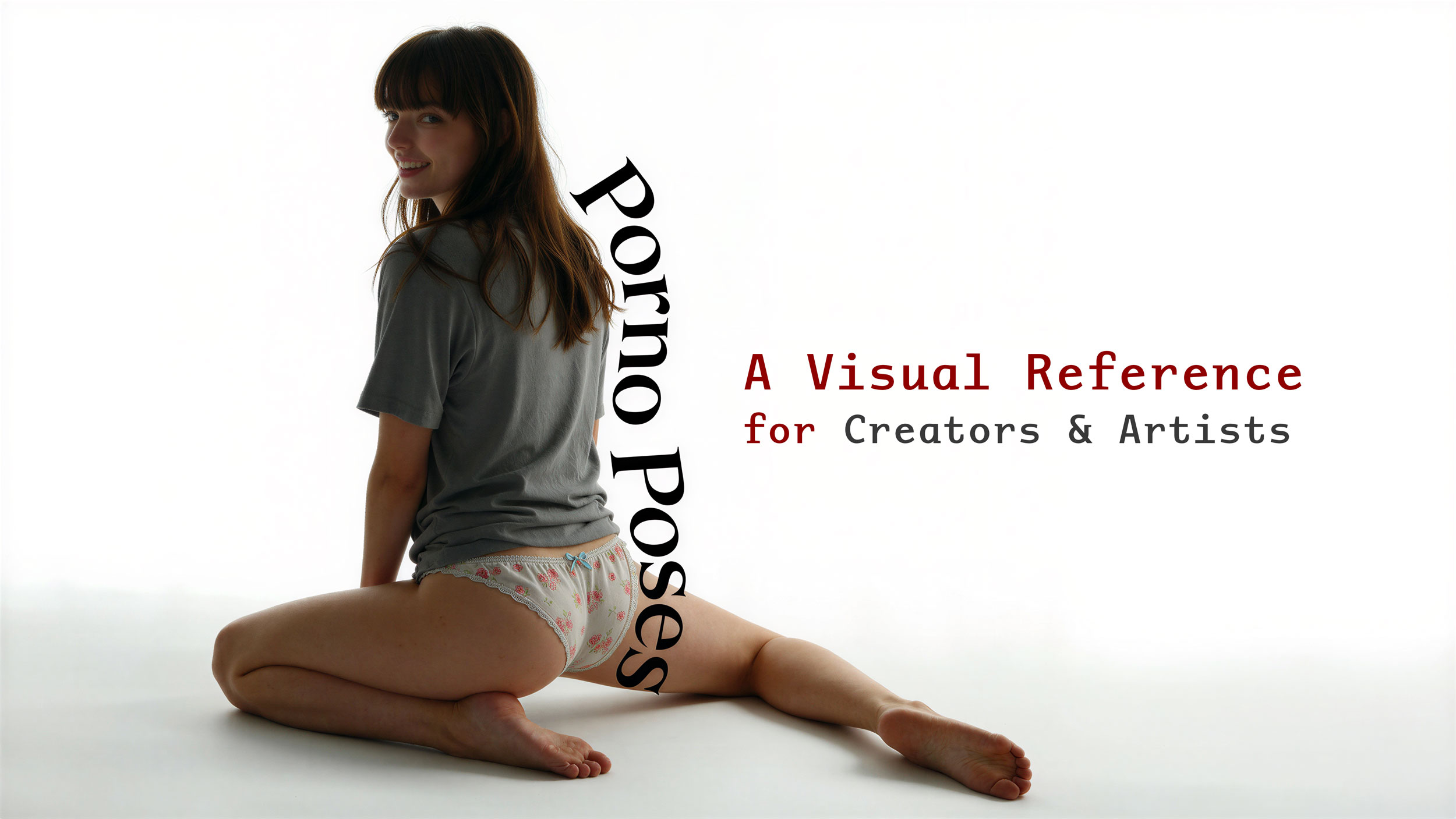
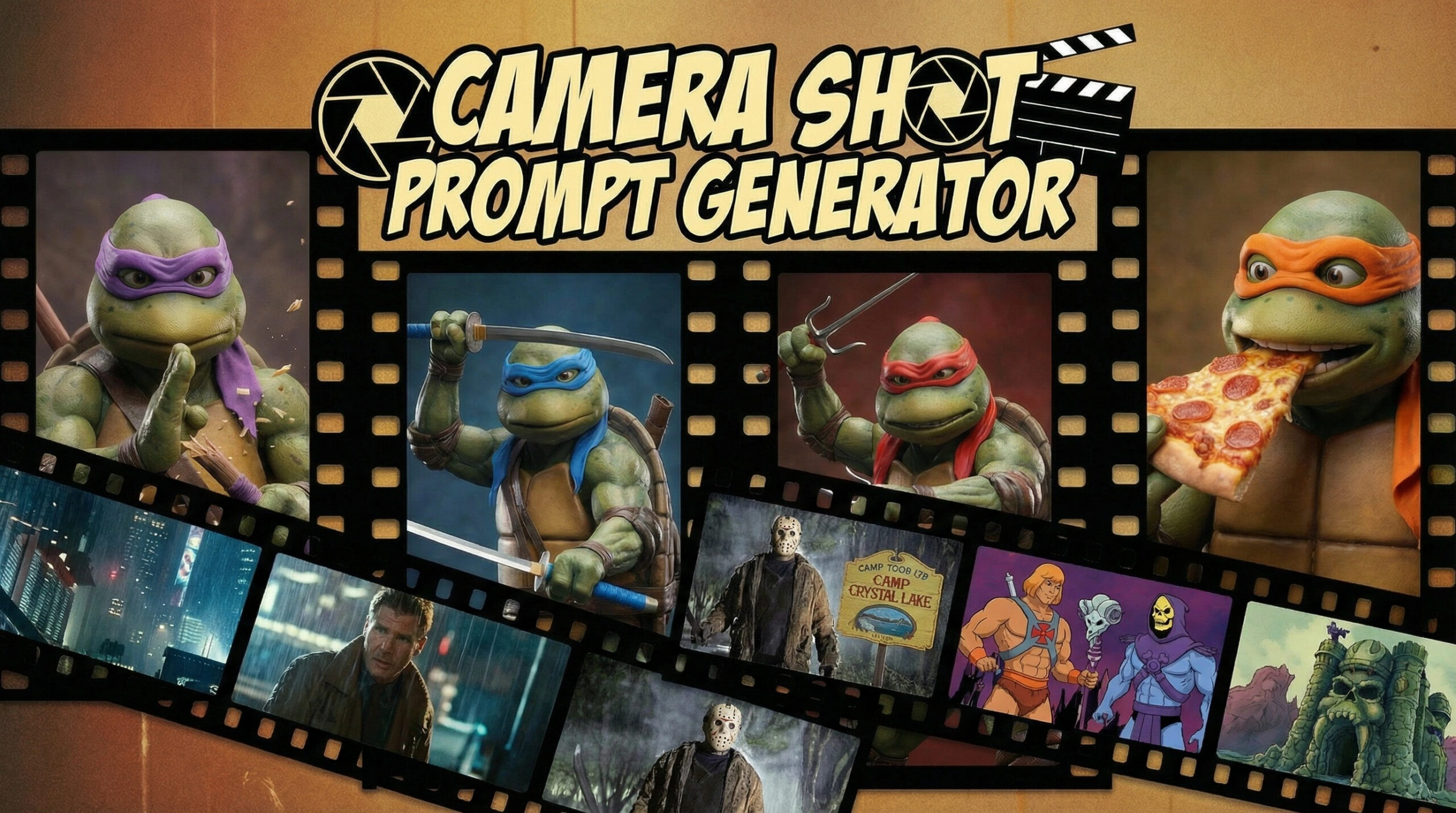


Leave a Reply